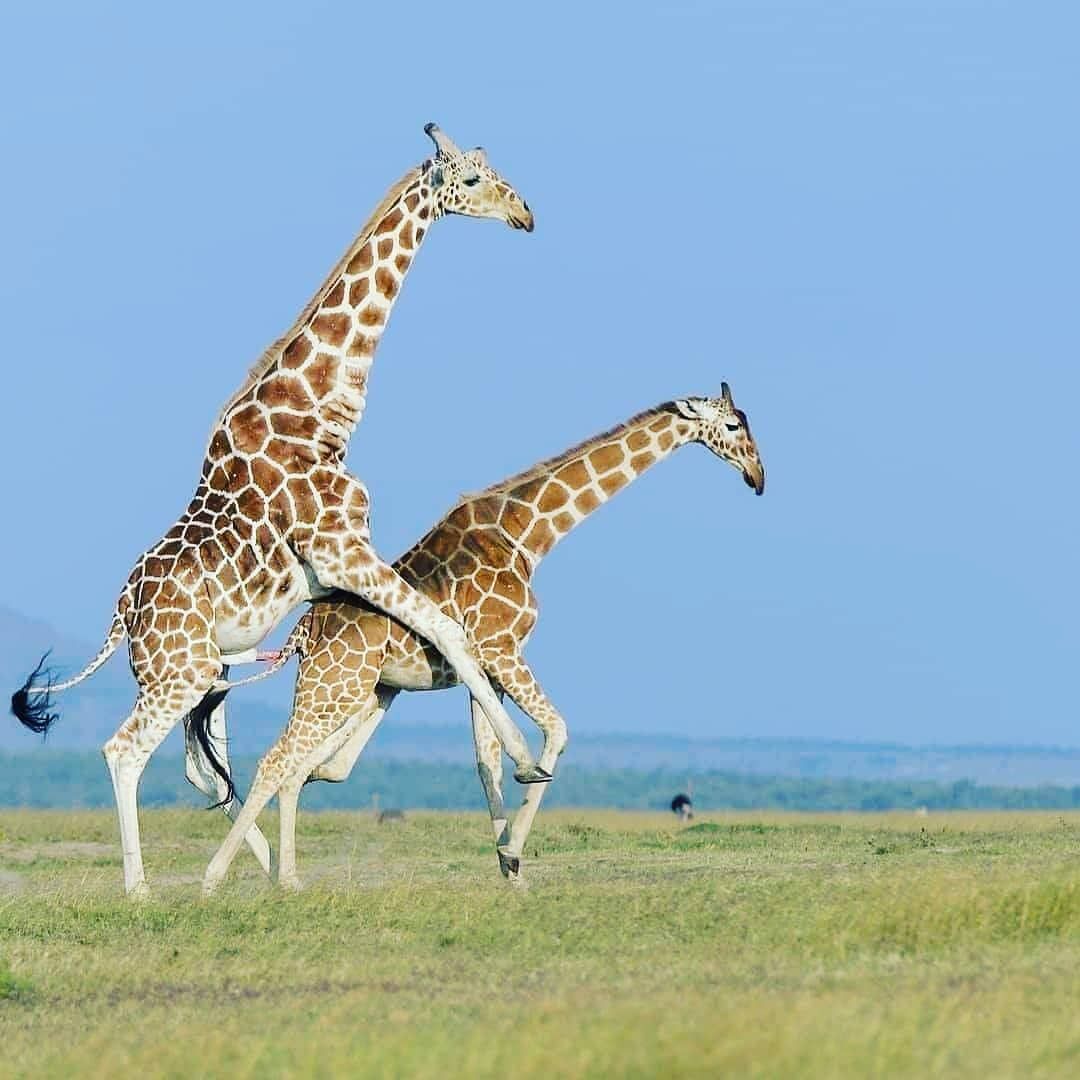

Sexual maturity of the female is at 48-60 months, the male is at 42 months. The giraffe mate at any time of the year with the gestation period being between 453 - 464 days. There is usually only one calf, very rarely twins. A giraffe cow in season attracts males from all around, but is soon won by a dominant bull. The male signals his readiness to mate by tapping on the female's hind leg with his foreleg or resting his chin on her back. He usually follows her, sometimes for hours, until she allows him to mount her
Giraffes don't have a set mating season. Instead they have an estrous cycle, which is a lot like the human menstrual cycle (but with less blood and slightly different hormones). The male giraffes don't just mate with the ladies all the time, so they generally try to find a way to determine is the lady is fertile.www.interiorsafarisea.com

Hey Mojo kids! Ready for an exciting adventure by going on a safari to see the most extraordinary animals living in the wild? Then order the amazing children's book "Know About Wildlife - Animals From A to Z" coming soon to Amazon! Once you embark on this great adventure, you will not want to stop until you have seen every single Animal from "A" to "Z" to learn more about the amazing creatures we share our world with!
Mojo Parents and Grandparents, reading this book with your children or grandchildren will be a great opportunity to not only bond and spend quality time with them, but it will teach them, and spark their curiosity, about all of the unique and interesting animals living in the wild. As future custodians of our planet, they will have a greater understanding and appreciation for these animals and they will be more inclined to preserve and to protect these wonderful creatures!
Please note that the author, Munir Noorbhai, will donate a portion of the proceeds from the sale of each and every book to help our team at MojoStreaming with our wildlife awareness and advocacy efforts! Please support our efforts by getting this book, which is now available for pre-order, by clicking the link below!
Know About Wildlife - Animals From "A" to "Z"
Thanks!
The Mojo Team!
Hello Mojos
We may have been quiet over the last period, but
phew, have we been busy. MojoStreaming is growing more popular each month, with
a record 180,000 pages being visited last month. The areas that we have
been focusing on are firstly, live streaming from locations all over the world,
which can be seen at our live streaming page https://www.
bears, or lie in wait with us at an African waterhole to see what creature
ventures up for a drink.
The second area is our wildly (excuse the pun)
popular talk show, Mojo Talks. We have accumulated a host of must see talk
shows which can be seen at https://www.mojostreaming.
watching these fascinating talk shows;
Andrea Crosta who heads up, a cloak and dagger operation utilizing experienced spy and international security agency people to infiltrate the world of illegal Wildlife trade, the fourth biggest crime syndication after (and often allied to) the drug trade, human trafficking and immigrant smuggling, and the firearm trade.

One of our favorites out of a bunch of great
interviews…Interview with Ofir Drori, a very special human being, who attacks wildlife
crime at ground level. Hear the fascinating and touching story of how he became
involved in his current activities.

Another amazing human being is British Journalist Eduardo Gonsalves, who despite huge personal challenges, is at the
forefront of the battle to stop imports of Wildlife Trophies into Britain.
And a firm favorite amongst all the wonderful
stories – the interview with Chinedu Mogbo, a Nigerian who rescues and rehabilitates Wildlife and
educates local communities, teaching them to respect, love and live with
Wildlife.
These are just a few of the more than thirty
interviews that can be seen on MojoStreaming.com. Also, don’t forget our P.P.V.
movies, especially Land of the Free “In the Shadows” https://www.mojostreaming.
Lastly, please encourage friends, colleagues and
family to sign up at MojoStreaming so that we can further spread the word of
the beauty and wonder of nature – but also of the major challenges facing it.
The Mojo Team